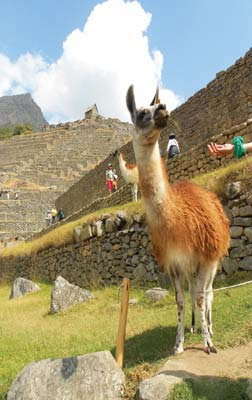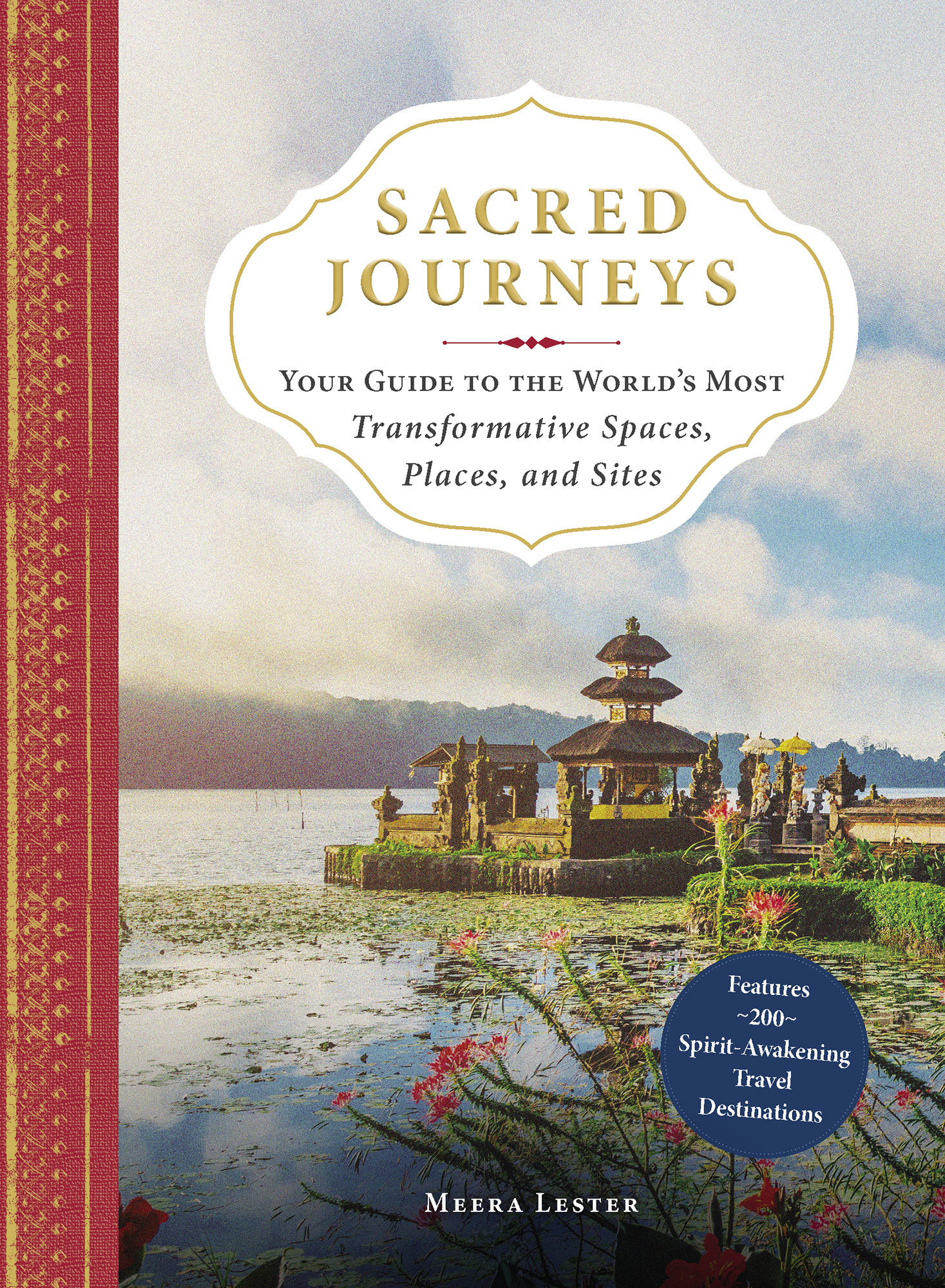C ONTENTS
Guide
Thank you for downloading this Simon & Schuster ebook.
Get a FREE ebook when you join our mailing list. Plus, get updates on new releases, deals, recommended reads, and more from Simon & Schuster. Click below to sign up and see terms and conditions.
CLICK HERE TO SIGN UP
Already a subscriber? Provide your email again so we can register this ebook and send you more of what you like to read. You will continue to receive exclusive offers in your inbox.
We hope you enjoyed reading this Simon & Schuster ebook.
Get a FREE ebook when you join our mailing list. Plus, get updates on new releases, deals, recommended reads, and more from Simon & Schuster. Click below to sign up and see terms and conditions.
CLICK HERE TO SIGN UP
Already a subscriber? Provide your email again so we can register this ebook and send you more of what you like to read. You will continue to receive exclusive offers in your inbox.

I NTRODUCTION

H umans have long sought sacred places to express their faith, find meaning, gain guidance, receive healing, mourn a loss, and experience renewal. From Mecca to the energy vortexes of Sedona, Arizona, and from the sacred stones of Stonehenge in England to Crater Lake in the Cascade Mountains of Oregon, these hallowed places are as varied as the people who visit them.
These mystical environments, which are often associated with mysterious energies or special powers, can serve as oases for an arid heart or lift a spiritually yearning soul. In sacred places, you can engage in a rite of passage, light a ceremonial candle, meditate, pay homage to your ancestors, or simply offer a few words of gratitude to the people or forces of nature that created such a wonder.
This book is your guide to two hundred sacred places throughout the world. These transformative sites range from hidden grottoes, natural springs, red-colored cliffs, and ancient stone circles to vaulted-ceilinged cathedrals, massive megaliths, stone pyramids, intricately carved temples, and totems. There are even entire towns, mountain ranges, seemingly endless rivers, ancient forests, and Iron Age ring forts that are considered sacred in some traditions.
Your spiritual journey can take you all over the world. On the following pages, youll find different icons for the geographic location where each destination is found:
Asia | * |
Europe | ^ |
North America | ~ |
South America | # |
Africa | + |
Oceania | % |
Explore your spirituality. Visit one or more of the many sacred sites in the world to pay respect, meditate, reflect, perform a ritual, or follow the ancient cycle of prayerthat is, praise, worship, and listen. Then let inspiration guide you into action. Repeat the cycle, inspired by the spirits of the sacred places you visit.
Acropolis of Baalbek (also Romanized Triad of Heliopolis)

Baalbek, Lebanon
Love is all we have, the only way that each can help the other.
Euripides (ca. 480406 B.C. ), Greek playwright
A fter Alexander the Great conquered and Hellenized Baalbek, changing its name to Heliopolis, the Romans assimilated their deities Jupiter, Mercury, and Venus with the indigenous deities Baal (Lord), Aliyan (Baals son), and Anat (Baals daughter and Aliyans consort). Then, on a hilltop in Heliopolis, the Romans spent two hundred years building the Acropolis of Baalbekone of the largest and finest temple complexes of the Greco-Roman period. For centuries, people worshipped at the monument and at the round Temple of Venus, goddess of love and tutelary deity of the acropolis.
If you wish to safeguard your love or to contemplate religious tolerance, journey to Baalbek. The best way to tour this World Heritage site is with a local guide. Baalbek is a major town in eastern Lebanon, accessible by road from Beirut (nearest airport) and Damascus, Syria.
Soothe Your Spirit
Bring a small stone symbolizing romantic love (red, heart-shaped) or Divine love (white, thunderbolt-shaped). Carry your love talisman as you stroll around the site, soaking in the sacred power of this former city of love and grace.
A Deeper Look
In 1200 B.C. , long before the Romans arrived, the Canaanites built a sanctuary here, where they honored Astarte, goddess of love and fertility. Archaeologists believe that the Assyrians, Phoenicians, and Israelites may have also worshipped at this site.
Agii Apostoli (Church of the Holy Apostles) Solaki

Athens, Attica, Greece
Give me where to stand, and I will move the earth.
Archimedes (ca. 287212 B.C. ), Greek mathematician and intuitive
T his Byzantine church stands below the ancient Acropolis of Athens and along the agora (open-air place of assembly), where saints, philosophers, and orators imparted their ideology and insights to all within earshot. The rose-colored brick exterior features lovely crenulated arches over narrow wooden doors and a heavy metal bell hanging from a large protruding stone (as no bell tower exists) as well as white stone benches in the courtyard. Inside, ornate Corinthian columns support the arches of a dome adorned with frescoes of cherubs, angels, John the Baptist, and the Christ Pantocrator (Almighty, or Sustainer of the World).
Whether you seek spiritual sustenance or enlightenment, include this lovely church in your visit to Athens. Agii Apostoli Solaki, in the heart of the city, is best seen on foot. Entrance is free.
Soothe Your Spirit
Take refuge from the suns heat and your racing thoughts in the churchs cool, calm interior. Standing under the domes frescoes, pray for the assurance or guidance you seek. Before continuing your exploration of Athens, sit on one of the outside benches and reflect on the sacred message sent to your heart by the apostles, or perhaps Christ Pantocrator.
A Deeper Look
The church was built in the tenth century A.D. over a second-century nymphaion (sacred spring) honoring nymphs, the nurturing water deities of Greek mythology.
Ajanta Caves

Ajanta, Maharashtra, India
Be a lamp unto yourself. Work out your liberation with diligence.
Siddhartha Gautama, the Buddha (563483 B.C. ), father of Buddhism
O n the cliff of a deep forest ravine overlooking the Waghora River in the Sahyadri Hills of southern India is a sacred treasure: twenty-nine rock-cut caves used as Buddhist monasteries and temples from the second century B.C. to the seventh century A.D. The tenacity it took to chisel these monuments out of volcanic rock is testament to spiritual devotion. The beauty of the friezes of the Buddha and bodhisattvas adorning the walls and ceilings of the caves speaks to the liberating light of such devotion.

















